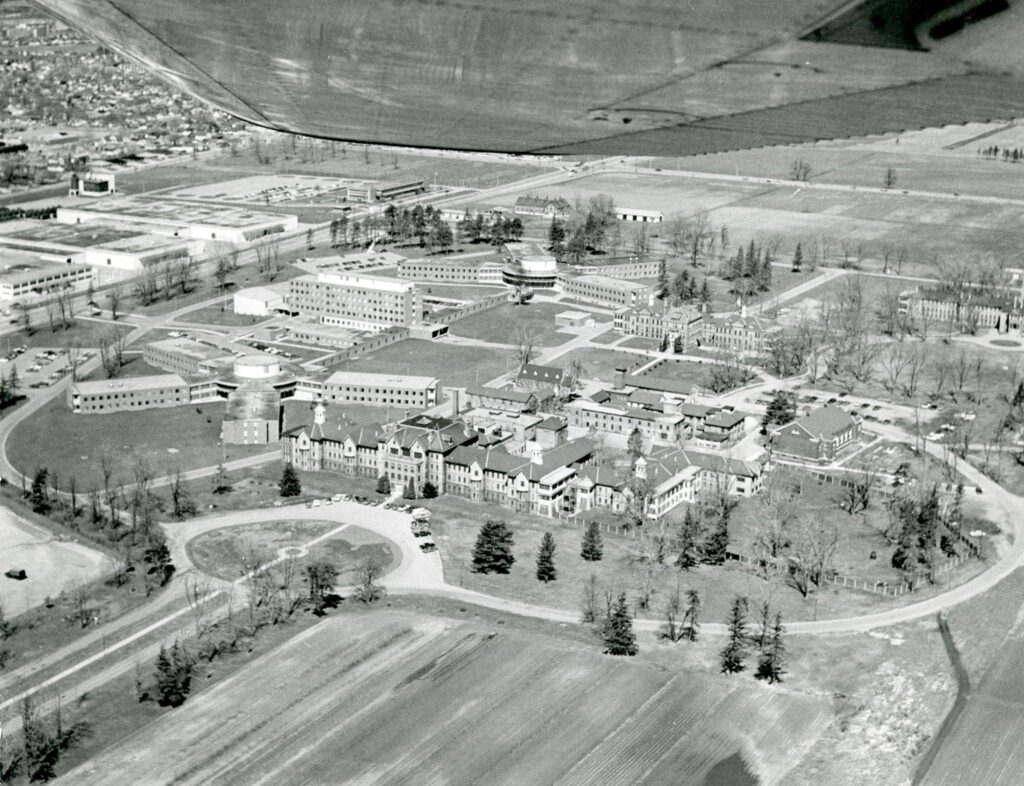Join us for the GRAND OPENING of Heritage London Foundation’s new exhibit “Building the London Asylum for the Insane” on July 30th from 1-4pm at Grosvenor Lodge (1017 Western Road, London ON, N6G1G5).
The exhibit will also be open to the public Sunday Aug 6, 13, and 20th from 1- 4pm.
In 1870, the former London Asylum for the Insane opened its doors to patients from across Southern Ontario in need of mental health care. Twenty years earlier the first government funded institution for the care of the mentally ill opened in Toronto – however, within two decades this institution and two others, at Malden and Orillia, were unable to meet the needs of their communities. As a result, the provincial government decided to open a facility in the growing city of London, providing $100 000 for the construction of the building and buying 300 acres of land by the corner of Highbury and Oxford.
Henry Landor, the first superintendent of the London Asylum believed that “With so many incurables… treatment is confined to taking care of comforts (including) good and nourishing food, clothing [the insane] well, and working those who have the strength to work, exercising out of doors those who can walk…” The London Asylum for the Insane became a site where ‘moral treatment’ was practiced – a new form of care that prioritized the things highlighted by Landor. Even so however, during the nineteenth century the asylum was nonetheless a place of restraint, conflict, and loneliness.
Patients like Barbara Parent, a twenty-year old single woman with epilepsy who was described as childish, able to amuse herself for hours with a rag, and unable to feed or dress herself were housed alongside patients like Mary Robb, a forty-five year old married boarding-house-mistress with eight children who was considered to be both suicidal and dangerous. Some patients remained within the institution for a matter of months, others for years, and many for decades.
But what did the original site, that was home to these patients, look like? Over one hundred and fifty years ago, this site was home to dozens of buildings – including barns, cottages, a bakery, a mortuary, and a house for the superintendent. Today, the property has been purchased by a developer and will soon be transformed into a residential neighbourhood. Only four of the original nineteenth and early twentieth century buildings still survive on site and are expected to be integrated into the development.

The HLF exhibit “Building the London Asylum for the Insane” is COMING SOON to Grosvenor Lodge.
This interactive exhibit explores the built heritage of the London Asylum for the Insane in face of the remarkable change occurring on the site today. It answers questions including: How did patients feel about their home within the walls of these buildings? How did employees feel about their jobs within the institution? And how did the community view the institution and its residents? While most of these nineteenth century buildings are lost to history – how does history, and more importantly, how do we remember them?
Come learn about the history of the London Asylum for the Insane and gain a glimpse into the lived experience of inmates, employees and community members affected by this institution.
